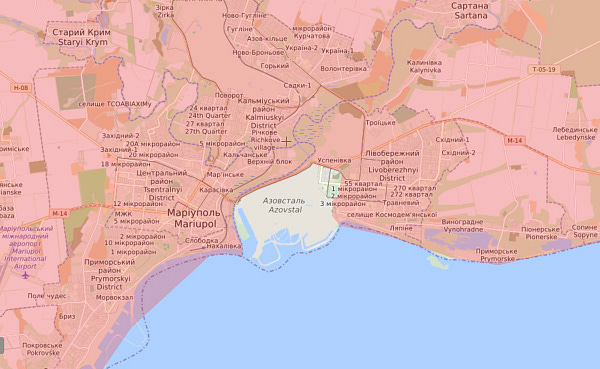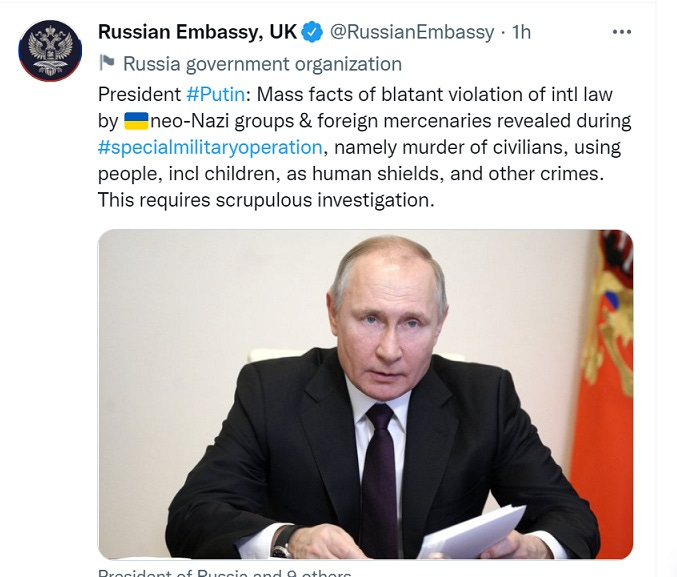The most documented war in history
Sources of information: social media, Telegram channels, OSINT
The Most Documented War in History- A Brief Overview
Information about Russia’s war of genocide in Ukraine is coming in from all quarters everyday and on an unprecedented scale: legacy media, OSINT investigators, and social media platforms.
In a Deep Dive Politics Spaces, produced by co-host Ali Onur Özçelik, Scott and I asked Dr Jennifer Cassidy about the information space in Russia’s war of genocide in Ukraine. She said that no other war in history has been documented in the public sphere to this extent, Syria included.
She’s right.
Our media alerts ping instantaneously when leaders make public statements or are in talks. Macron is on the phone with Putin (again), Stoltenberg is about to hold a NATO presser, and president Zelensky has just released a video with his latest thoughts and hopes.

Last November, the US and the UK intelligence community warned leaders of the EU and Ukraine about Russia’s military build up along the Ukrainian border, and declassified intelligence for the general public. Those statements were backed up by Maxar satellite images published in the legacy media.
Russian state accounts on social media, state media (TASS, RIA Novosti) and pro-Kremlin telegram channels aren’t exactly dishing out ‘information’- rather, a heap of disinformation and gaslighting.
There’s too much to say here, so I’ll get into more detail in future posts as will Livia Ponzio, our transatlantic crew expert in Russian disinformation and information systems.
What is important to note now is that Russian info warfare is not about amusing memes or infuriating posts. It’s a weapon and it has a purpose.
The narratives pushed by information vectors create a ficticious world, which they would have us believe is real. All the Russians need is a small portion of the population to believe their false narratives- just enough to seed chaos through societal rifts, destabilise the whole, and keep everyone distracted from the real issues that need attention.
Developed in the 50s and 60s, ‘active measures’ are an integral part of the Russian warfare effort and accompany all non-kinetic and kinetic operations at home (propaganda) and abroad (disinformation).
Clint Watts provides an overview of the Russian operational infosphere. At the top are three Russian intelligence agencies: the GRU, SVR and FSB. The narratives are created in these agencies and then disseminated through distribution vectors and force multipliers below. These are just a few: there are many others.
While the Russian infosphere is fascinating, I’m especially interested in the reporting on the ground by contacts, posted on social media, or by veteran journalists published in the legacy media. Activists like Maria Avdeeva has been documenting Russian war crimes and destruction almost on a daily basis in Kharkiv.

Olga Tokariuk, an independent journalist, is actively reporting from Ukraine as well, and she’s the host of her own Spaces featuring Ukrainian human rights activists and witnesses to Russian war crimes and genocide.


OSINT investigators, like Rob Lee, report on the military campaign, and were following and documenting the Russian military build up well before February 24. It’s important to follow trusted OSINT investigators who help weed out Russian propaganda and disinformation.

Owing to the millions of eyes and ears in Ukraine, we’re getting information in real time and then confirmed within minutes as in this post by The Kyiv Independent.

Just a shout out for the The Kyiv Independent: it’s been a reliable source for information on various aspects of the war.


Since I’m a fan of Estonia and its concrete support to Ukraine, I had to slip this bar graph in.
Infographs provide easily readable information, just like maps; however, you need to be careful with maps because they can be misleading and can distort information. That’s not the case with this map.


Nathan Ruser’s maps are informative and give a truthful indication of how much territory the Russian’s now control. More on the importance of factual maps in future posts.
This is just the beginning of a series of posts on how the Russian war of genocide is being documented through official, investigative, and social media sources on the ground. I’ll also be dedicating posts to how European and American issues are framed in relation to the war and other events.
Our heartfelt thanks to Olga Tokariuk and Vadym who were our EuroFile@6 guests on April 21st. They provided us with first hand information about Russia’s war of genocide in Ukraine, and we hope they’ll join us again in future Spaces.
Stay tuned and…thanks for reading,
Mo









